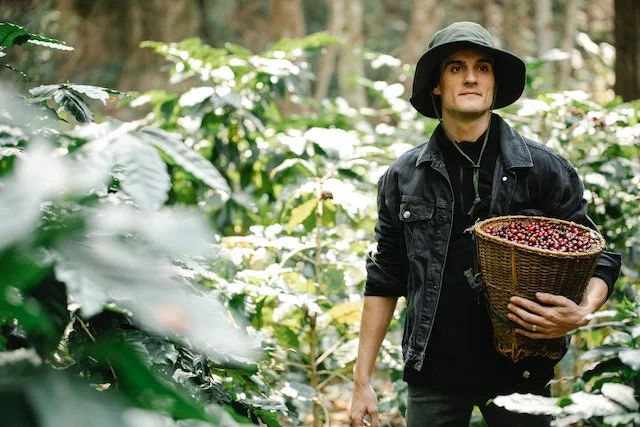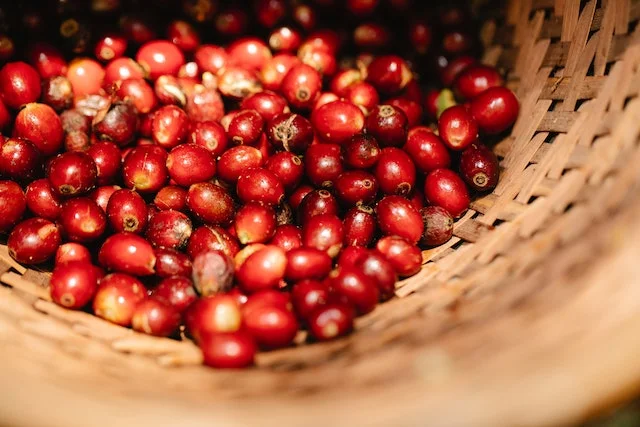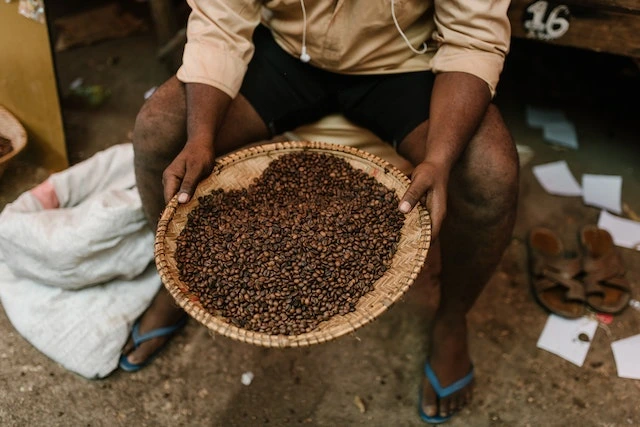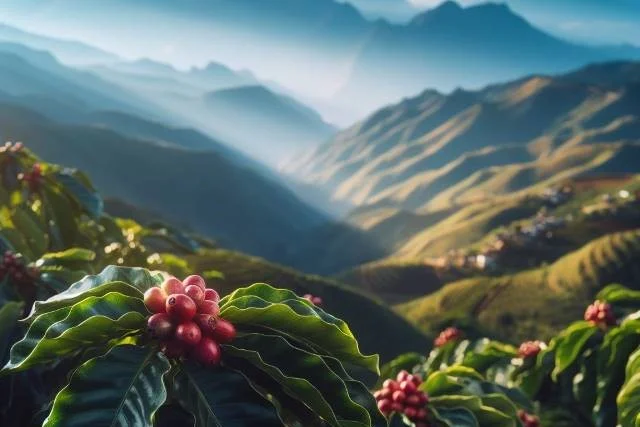Altitude Coffee: Exploring the Unique Flavors and Origins
Coffee contains many intricate variables that contribute to each coffee’s one-of-a-kind taste. One important factor is the elevation where the coffee is cultivated, known as altitude. Altitude plays a significant role in determining coffee’s overall flavor profile and quality grade. This article will examine the world of altitude coffee in-depth.
Growing coffee at higher altitudes imparts remarkable qualities, unlike lower altitude coffees. The altitude introduces an essence of terroir and complexity into the beans themselves. Let’s take a closer look at what makes altitude coffee so distinct.
Key Takeaways
- Altitude and Flavor: Coffee grown at higher altitudes offers vibrant, fruity notes and aromatic complexity, making it distinct from lower-altitude counterparts.
- Regional Flavor Variations: Coffee flavors vary based on region, influenced by altitude and terroir, contributing to unique taste profiles.
- Arabica vs. Robusta: Arabica thrives at high altitudes, resulting in nuanced, complex flavors, while Robusta suits lower altitudes, known for its bold, robust taste.
- Quality and Grading: Higher altitudes typically mean better coffee quality, influencing grading and pricing. Altitude-specific techniques enhance flavor.
The Basics of Altitude Coffee

Before exploring how altitude impacts flavor, we need to cover what exactly altitude coffee is and why elevation is so crucial for coffee.
Altitude coffee refers to coffee grown at elevations above 3,900 feet or around 1,200 meters. The highest caliber gourmet coffees worldwide are grown up to 6,600 feet in mountainous highland areas. The most prized beans come from extremely high altitudes.
Several reasons make altitude vital for top-quality coffee:
- Cooler temperatures slow cherry ripening, developing more complex bean flavors.
- Increased UV exposure enhances bean growth and maturation.
- Less dense soil improves drainage, preventing oversaturation.
- Cooler climates have fewer pests and fungi.
- The climate, soil, and terrain impart terroir into the flavor.
These excellent coffee growing conditions make higher elevations perfect for producing the best beans. Next, we’ll see how these factors influence flavor.
How Altitude Affects Coffee Flavor
The distinctive conditions at different elevations impact bean development, creating nuanced flavor profiles.
Higher altitude coffees often exhibit:
- Bright, vibrant acidity
- Intense floral, fruity notes
- Sweetness and aromatic complexity
- Smooth, tea-like body
Lower altitude coffees generally offer:
- Milder acidity
- Earthy, herbal flavors
- Heavy, syrupy body
As a broad generalization:
- 1,000-2,000 ft – nutty, chocolatey, low acidity
- 2,000-4,000 ft – balanced with good acidity
- 4,000-5,500 ft – very bright, citrusy, floral
- Above 5,500 ft – lively, fruity, tea-like
However, variety, processing, roasting, and brewing impact taste too.
Cool mountain conditions give altitude coffee layered, vibrant flavors through:
- Longer ripening periods
- Better moisture regulation
- Increased acidity
- More sunlight
Now let’s explore how altitude and terroir affect coffee flavors worldwide.
Coffee Regions and Altitudes

Coffees all have inherent flavors tied to their particular origin’s altitude and terroir.
Central and South American Regions
This area produces famed altitude coffees including:
- Guatemalan: Exceptional Antigua coffee from elevated regions like Huehuetenango with hints of chocolate, caramel, and citrus.
- Colombian: Renowned for mild, balanced coffee. Areas above 5,000 ft like Huila and Tolima have juicy, fruity notes.
- Costa Rican: Grown from 3,900-5,900 ft in nutrient-rich volcanic soil, exhibiting bright pineapple and other fruit tones.
- Mexican: Around 4,000 ft makes coffee with mild acidity, rich body, and nut and berry hints.
African Regions
Africa’s unique terroir produces revered altitude coffees like:
- Ethiopian: The birthplace of Arabica coffee, grown from 4,500-6,600 ft. Floral, fruit, and wine-like complexity.
- Kenyan: Extremely high altitude above 5,900 ft gives notes of black currant and savory sweetness.
- Rwandan: Volcanic soil and cool temps from 4,500-6,600 ft generate lemon, pineapple, and other fruit flavors.
Asian Regions
Noteworthy Asian altitude coffees:
- Indonesian: Full-bodied with low acidity and exotic earthy, spicy notes. Best above 4,500 ft.
- Indian: Between 3,000-7,000 ft, intense exotic spice flavors emerge.
- Papua New Guinea: Around 5,000 ft in mineral-rich volcanic soil produces sweet, balanced coffee.
While processing and roasting affect taste, altitude provides those core-origin flavors.
Altitude Coffee Varieties

The two commercial coffee species – Arabica and Robusta – thrive at different elevations and offer distinct flavors.
Arabica vs. Robusta at Different Altitudes
- Arabica: Prefers 3,900-6,600 ft. More nuanced, complex flavors.
- Robusta: Below 2,600 ft. Bolder, harsher taste.
Arabica excels at high altitudes for its aromatic, complex flavors.
Emerging Varietals at Higher Altitudes
New Arabica varieties cultivated at increasing altitudes include:
- Sudan Rume: Above 6,600 ft. Light, fruity, and floral flavor notes.
- Ethiopian Hybrids: Bred for disease resistance. Intense yet refined berry, citrus, and wine tones.
- Villa Sarchi: Originally from Costa Rica. Features jasmine and stone fruit notes.
The variety determines the inherent flavors that altitude conditions then develop.
Altitude and Coffee Quality
Higher altitude typically means better coffee quality, impacting grading and pricing.
The Relationship Between Altitude and Quality
Key points about altitude and quality:
- More nuanced flavors develop with increased elevation, but variety, processing, and roasting matter too.
- The 4,000-6,000 ft range is ideal for peak quality and complexity. Below 4,000 ft quality drops sharply. Above 6,000 ft, growth is restricted.
- Altitude creates consistent flavor profiles from harvest to harvest.
- Exceptional coffees produced at altitude demand premium prices for predictably high quality. But value depends on more than just elevation.
Coffee Grading Based on Altitude
Some quality grading systems denoting altitude:
- Strictly Hard Bean (SHB): From 4,500+ ft. Very dense, high mass beans indicating fruit quality.
- European Preparation (EP): Also 4,500+ ft minimum. Ultra-strict standards for large, dense SHB beans.
- Altitude is one metric used along with processing method and bean size to grade premium coffee.
Farm to Cup Journey
Appreciating altitude coffee requires understanding the careful production that maximizes its flavors.
Cultivating Coffee at High Altitudes
Some approaches:
- Terraced hillsides to improve drainage on steep slopes.
- Strategic planting density and pruning to balance sunlight and temperatures.
- Wind barriers protect plants from frost.
This specialized infrastructure facilitates ideal coffee plant conditions.
Harvesting Techniques for Altitude Coffee
Methods like:
- Hand-picking only perfectly ripened cherries for quality.
- Multiple passes to select ready cherries due to uneven ripening times.
- Precise, seasonal timing of harvests based on altitude and weather patterns.
Processing Altitude Coffee Beans
The two main processing methods:
- Washed: Fermentation removes fruit highlighting bean flavor clarity.
- Natural: Dried inside fruit imparts fruity, funky notes.
Washed coffees tend to best exhibit elevation’s flavor impact.
Sustainable Altitude Farming
Altitude’s challenges require responsible farming to protect the land.
Organic Practices for Altitude Coffee
Approaches like:
- Natural pest management utilizing native plants, beneficial insects, and biodiversity instead of pesticides.
- Enriching soil health through composting, contour planting, and natural erosion control.
- Conserving water by capturing ample rainfall and using efficient irrigation.
Environmental Considerations
Factors:
- Preventing deforestation which severely damages ecosystems. Opting to grow under a shade canopy instead.
- Implementing methods to address climate change which threatens coffee through warming and extremes.
- Reducing the overall carbon footprint via local goods, renewable energy, and eco-friendly processing.
Sustainable techniques prevent overexploiting the fragile high-altitude terrain.
Brewing Altitude Coffee

Proper altitude coffee brewing requires precision to highlight exceptional attributes.
Altitude-Specific Brewing Tips
Such as:
- Lighter roasts showcase inherent flavors and nuances.
- Slightly finer grind for thorough extraction from dense beans.
- A lower temperature around 200°F prevents over-extraction bitterness.
- Pure water avoids masking complex tastes.
- Manual pour-over or drip for control over timing and extraction.
Altitude’s Impact on Coffee Extraction
The incredibly dense altitude bean structure can be hard to extract properly. But the flavors shine when brewed attentively.
Table 1: Altitude Ranges and Associated Flavors
| Altitude Range | Common Flavor Notes |
| 1,000 – 2,000 ft | Nutty, chocolatey, low acidity |
| 2,000 – 4,000 ft | Balanced, good acidity |
| 4,000 – 5,500 ft | Bright, citrusy, floral |
| Above 5,500 ft | Intense fruit, tea-like |
Roasting Altitude Coffee
Thoughtful roasting enables altitude’s influence on flavor to emerge.
Ideal Roasting Profiles for Altitude Beans
Such as:
- Lighter roasts showcase inherent character.
- Shorter times since dense beans need less roasting.
- Lower temperatures around 390-410°F to prevent scorching.
- Moderate levels to develop flavors while preserving brightness.
How Roasting Affects Flavor Development
- Too light may create flat, grassy flavors lacking sweetness and acidity.
- Too dark can produce burnt, overpowering tones rather than brightness.
- Altitude coffee’s flavors emerge around light to medium roasts via Maillard reactions and caramelization.
Finding the perfect balance results in a stellar cup.
The Global Specialty Coffee Market

Rising consumer demand for quality drives the specialty coffee market, with altitude signaling excellence.
Table 2: Altitude Coffee Grading
| Grade | Minimum Altitude | Bean Characteristics |
| SHB | Above 4,500 ft | Very dense, high mass |
| EP | Above 4,500 ft | Large, dense SHB beans |
Altitude Coffee Consumption Trends
For example:
- Growing global demand, especially in developing Asian markets.
- Specialty coffee boom focused on quality, terroir, and ethics.
- Premium prices fetched for verified high elevation and sustainability.
Economic Factors
Such as:
- Increasing rarity as climate change makes altitude coffee more exclusive and remote.
- Production and shipping costs, along with labor shortage issues.
- Commodity price volatility, though specialty remains relatively stable.
Despite challenges, altitude coffee’s outstanding quality and flavor keep popularity high.
Conclusion
Like fine wine, altitude coffee combines art and science for a nuanced taste experience. The elevation lends the beans an essence of the originating terroir. Sipping high-altitude coffee connects us to the peaks, forests, and farmers dedicating exceptional effort to every bean. With a deeper appreciation of what goes into cultivating these coffees, we can recognize and savor the sublime flavors in each cup. The exploration continues as new aromas and tastes emerge every harvest. What’s your own altitude coffee adventure? The world’s highest mountains await.
FAQs
Coffee grown over 3,900 feet (around 1,200 meters) earns the high altitude designation.
Higher altitude lends coffee brighter, fruitier notes and vibrant acidity. Lower altitude means milder, earthier flavors.
Arabica flourishes between 3,900-6,600 ft where it develops complex, nuanced flavors. Robusta suits elevations under 2,600 ft with its bolder taste.
Yes, altitude typically produces better quality coffee that gets graded and priced accordingly. Systems like Strictly Hard Bean require 4,500+ ft minimum.
Terracing hillsides, strategic planting densities, timing harvests, and processing methods like washing all optimize flavor at altitude.








